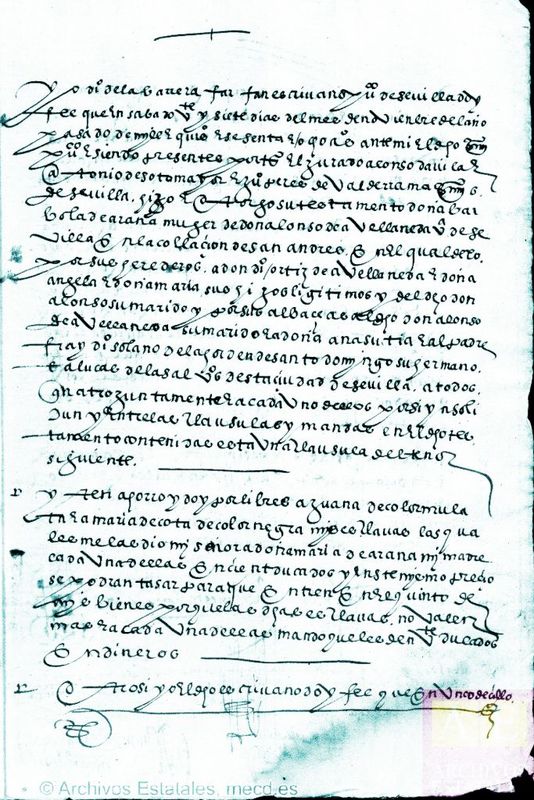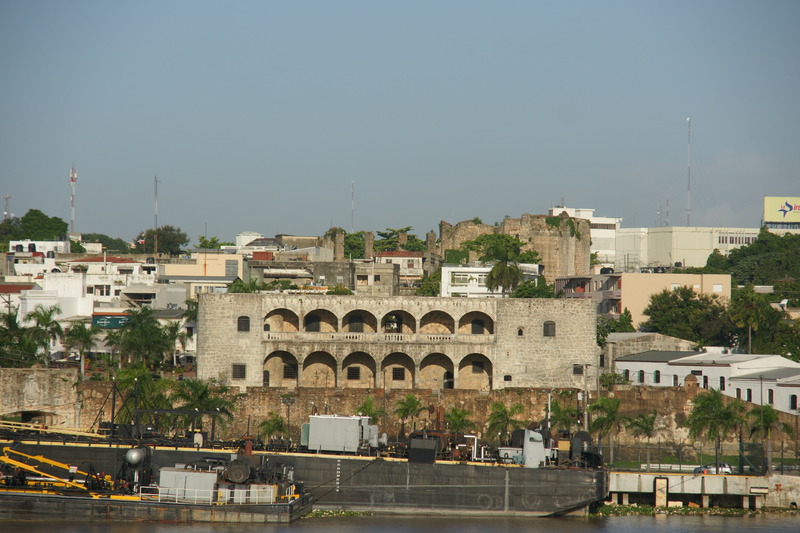Manumission of two female black slaves from Santo Domingo living in Seville (1568)
TRANSCRIPTION
ENGLISH TRANSLATION
+ I D[ieg]o de la Barrera Farfan public notary of Seville I certify that on Saturday twenty seventh day of the month of November of the past year of fifteen sixty eight before me the said public notary and being present as witnesses the jury Alonso Davila and [An]tonio de Sotomayor and Jo[a]n Peres de Valderrama [notarie]s of Seville, doña Barbola de Arana wife of don Alonso de Avellaneda resident of Seville at the parish of San Andres did and granted her testament. In which she left as beneficiaries don Di[eg]o Ortiz de Avellaneda e doña Angela e Doña Maria, her legitimate offspring and the aforementioned don Alonso her husband, and as executors of it don Alonso de Avellaneda her husband and doña Ana her aunt, and the priest fray Di[eg]o Solano of the Santo Domingo congregation, her brother and Lucas de la Sal, residents of this city of Seville to all four of them and each of them by him or herself together, and among the clauses and orders contained in the said will, there is a clause which reads as follows_______
r yten I set free and accept as free Juana, of mulatto color, and Maria de Cota, of Black color, my slaves, who were given to me by my lady doña Maria de Arana my mother each of them for one hundred ducados, and at this same price they may be assessed so as to include them in the fifth of my assets because the said slaves are not worth more and I order that each of them is given twenty ducados in money_________
[...]
Commentary
The process of liberating an enslaved person was called ahorramiento or manumission. It was recorded in a document that became a certificate of freedom which the formerly enslaved Black person had to have handy, in case they came across any socially powerful individual or government official who did not know them.
On November 27th, 1568 “doña Barbara de Arana,” wife of “don Alonso de Avellaneda” and daughter of parents who had enough means to have lived in Santo Domingo and then returned to reside in Seville, issued her testament in Seville in which she declared two female slaves, “Juana, de color mulata” and “Maria de Cota de color negra,” both of whom Barbara had inherited from her mother Maria de Arana, to be free. Each slave was valued by Barbara at 100 ducados. Barbara also ordered that after her death, each of the slaves was to be given 20 ducadosas well as being issued a certificate of freedom.


